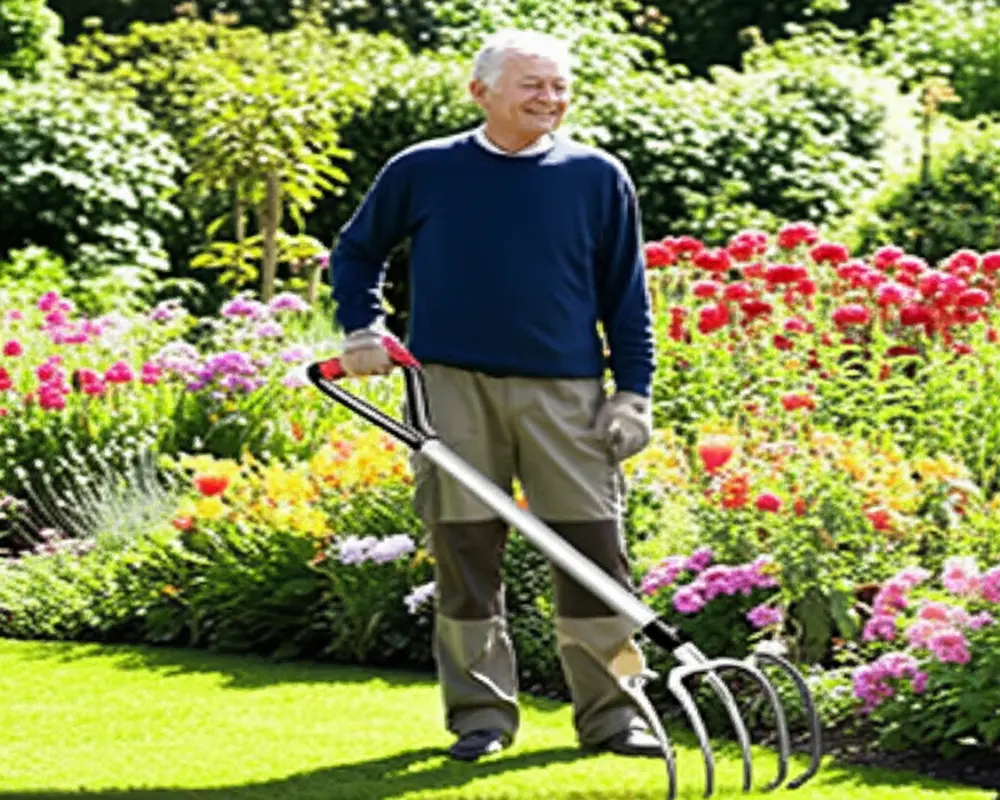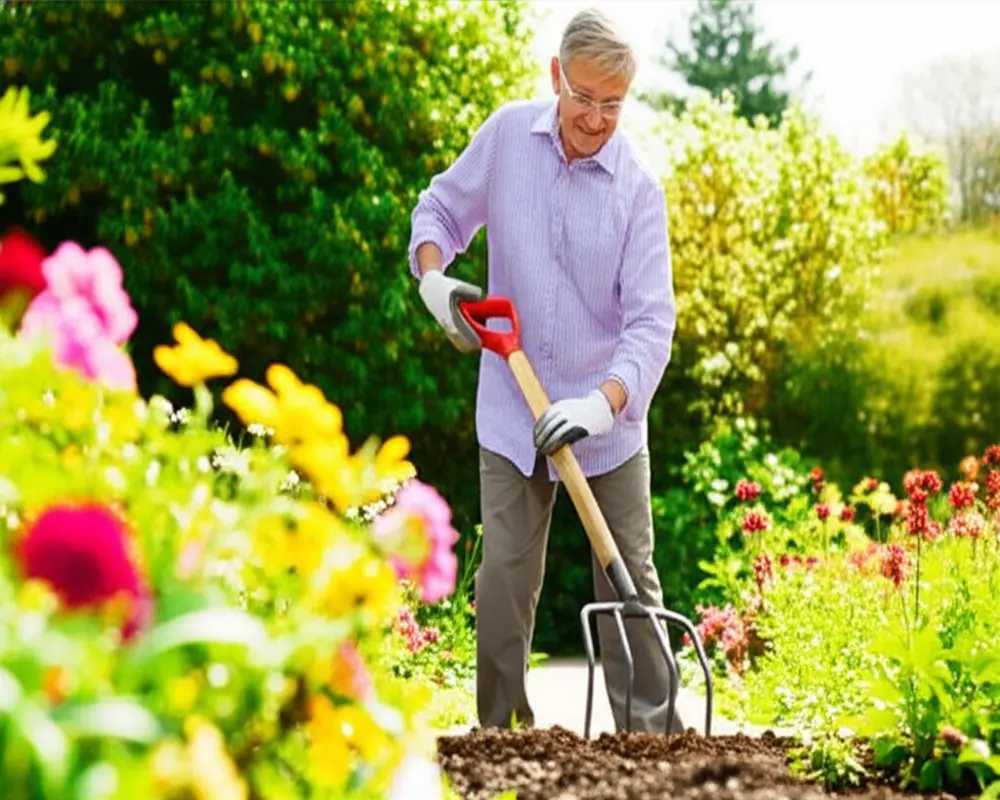The Best Garden Forks for Seniors: Ergonomic, Lightweight & Back-Friendly Solutions
Gardening remains a cherished activity for many seniors, offering both physical engagement and mental enrichment. Yet, this rewarding pastime can present challenges such as back pain, arthritis, reduced strength, and balance issues. Selecting the right garden fork for seniors can transform gardening from a task fraught with discomfort into an enjoyable, safe, and even therapeutic experience.
In this detailed guide, we explore the essential features of senior-friendly garden forks, recommend top products, and offer practical tips tailored to meet the needs of older gardeners.

Why a Senior-Friendly Garden Fork Makes a Difference: Addressing Common Pain Points
Seniors frequently encounter physical barriers to gardening due to age-related changes. Proper tool selection can alleviate these challenges effectively.
Reduced Strain & Fatigue
Back Pain: Extended bending can exacerbate lower back pain. Tools with appropriately long handles and optimized angles help maintain better posture, minimizing strain.
Arthritis & Hand Strain: Seniors experiencing joint pain benefit from ergonomic grips designed with padding and shock-absorbing properties, reducing discomfort during use.
Reduced Strength: Lightweight materials such as fiberglass or aluminum, combined with effective leverage from the fork's design, make soil penetration easier and less tiring.
Enhanced Safety & Stability
Garden forks crafted with balance and control in mind aid seniors in maintaining stable footing and minimize the risk of slips or accidents. Non-slip grips and balanced weight distribution support safer use.
Improved Efficiency
Efficient garden forks require less force to penetrate and aerate the soil, translating into easier digging, turning, and soil management which is especially advantageous for seniors.
Key Features to Look for in a Garden Fork for Seniors: A Comprehensive Buying Guide
Handle Design & Ergonomics
Choosing the handle type is foundational. Options include D-handles, T-handles, and long, straight handles. For seniors, longer handles reduce the need to bend excessively, thereby protecting the back. Additionally, the grip material should be cushioned, non-slip, and shock-absorbing to reduce hand fatigue and provide a secure hold.

Weight & Material
Low weight is crucial to combat fatigue. Common lightweight materials include fiberglass, aluminum, and stainless steel. The choice of material also impacts durability; stainless steel offers strength but can be heavier, so a balance between durability and weight is essential.
Shaft Design
The shaft’s length and shape significantly impact posture during gardening. Ergonomically curved or angled shafts help maintain natural wrist and back alignment. Features such as shock absorption enhance comfort by reducing vibrations transmitted through the tool.
Tine Design & Functionality
Garden forks vary in tine number and shape, with common configurations including 4-tine forks, border forks, broadforks, and specialized potato forks. Tine material—stainless steel or carbon steel—and sharpness determine effectiveness and longevity. Spacing between tines should suit soil types encountered.
Overall Balance & Maneuverability
A senior-friendly garden fork is well-balanced to allow effortless handling and precise soil work without taxing the user.
Top-Rated Garden Forks for Seniors: Product Recommendations & Reviews
Our evaluations focus on performance, ergonomics, user feedback, and value. Highlighted below are the best choices for various senior gardening needs.
- Best Overall Senior-Friendly Garden Fork: Combines ergonomic handle design, moderate weight, and durable tines, ideal for general gardening tasks.
- Best Lightweight Garden Fork: Constructed with fiberglass and aluminum, this fork significantly reduces arm and back strain during prolonged use.
- Best Fork for Back Pain: Features an extra-long, angled shaft to maintain upright posture and reduce lumbar stress.
- Best Fork for Arthritis: Equipped with cushioned, shock-absorbing grips for those with joint pain, enhancing comfort.
- Best All-Purpose Fork: Versatile tine design and balanced weight suit multiple garden soil types.
- Best Budget-Friendly Option: Provides essential ergonomic benefits without compromising quality, priced affordably.
User reviews consistently praise forks that prioritize comfort, reduce physical exertion, and uphold durability. For more information about ergonomic garden spades and digging tools that complement garden forks, consider exploring our Ergonomic Garden Spades Guide.
Understanding Different Types of Garden Forks & Their Senior Suitability
Different gardening tasks call for varying garden fork designs. Understanding each type aids in selecting the most suitable tool for your needs.
| Fork Type | Description | Suitability for Seniors |
|---|---|---|
| Digging Forks | Strong tines for breaking hard or compacted soil. | Ideal if designed with ergonomic features and lightweight materials. |
| Border Forks | Narrower tines for working on garden borders and confined spaces. | Good for detailed work; benefits from cushioned grips. |
| Broadforks | Wide tines used for aerating large soil areas without tilling. | Requires strength but ergonomic designs mitigate workload. |
| Potato Forks | Tines designed to harvest root vegetables without damaging them. | Useful with lightweight construction for ease of use. |
Expert Insights & User Testimonials
Occupational therapists emphasize maintaining proper posture and recommend tools with ergonomically designed shafts and grips to minimize strain. Gardening experts urge seniors to integrate adaptive tools into their routine, enhancing accessibility and enjoyment.
“Using tools tailored for seniors not only prolongs one’s ability to garden but also makes the experience more rewarding and less taxing on the body,” says Dr. Jane Mitchell, Occupational Therapist specializing in adaptive gardening tools.
Seniors who have used ergonomic garden forks report less fatigue and improved comfort, which encourages longer and more frequent gardening sessions.
Safety Tips for Using Garden Forks as a Senior

Proper posture and body mechanics are crucial to avoid injury. Warm-up exercises before gardening and taking periodic breaks help prevent muscle strain. It is essential to maintain a stable footing and keep the workspace clear of tripping hazards. Regular maintenance of tools, including cleaning and checking for damage, ensures safe operation.
For more tips on safe gardening practices suited for seniors, visit the National Institute on Aging's gardening safety advice.
Beyond the Fork: Complementary Adaptive Gardening Tools
To enhance comfort and reduce physical strain, consider additional adaptive tools such as long-handled trowels that reduce bending, cushioned kneelers to ease pressure on knees, wheeled seats for mobility, and raised garden beds for easier access. These assistive devices complement senior-friendly garden forks perfectly, promoting a holistic approach to accessible gardening.
FAQs for Senior Gardeners
How often should I replace my garden fork?
Regular inspection for bent tines, loose handles, or corrosion will guide replacement timing. Typically, a well-maintained fork lasts several years, but replacement is advisable if the tool shows damage that affects safety or efficiency.
Can I adapt regular garden forks for senior use?
Yes, adding cushioned grips or extending handles can make standard forks more ergonomic. However, purchasing a tool designed explicitly for seniors often provides better comfort and durability.
What is the best way to clean and store garden forks?
After each use, remove soil and debris with a wire brush, then dry thoroughly to prevent rust. Store in a dry, sheltered place, preferably hanging or in a tool rack.
Are there rental options available for adaptive gardening tools?
Some community garden centers and specialized tool rental services offer adaptive gardening equipment to try before buying or for occasional use. Check local resources or online platforms for availability.
Conclusion: Empowering Your Gardening Journey
Choosing the best garden fork for seniors with ergonomic, lightweight, and back-friendly features can make a profound difference in how seniors experience gardening. By investing in the right tool, you empower yourself to enjoy gardening with greater comfort, safety, and efficiency.
Start your journey toward easier gardening today by exploring our recommended forks and integrating expert tips for a healthier, more enjoyable gardening lifestyle.
For further insights into ergonomic gardening tools, visit our comprehensive guides such as the Ergonomic Garden Spades collection that complements garden fork choices.
Explore the world of senior-friendly gardening tools, and cultivate your garden with renewed passion and ease.

